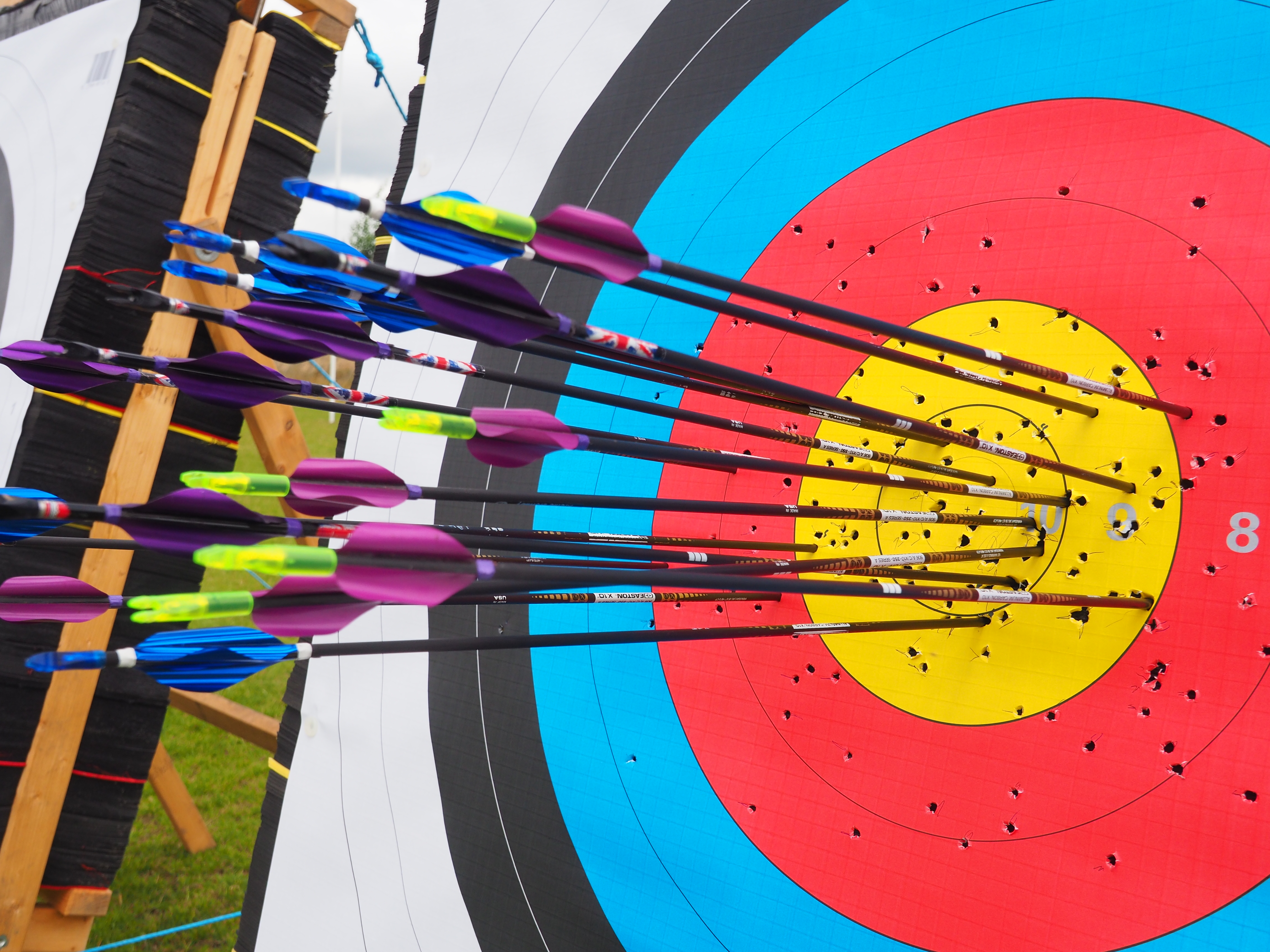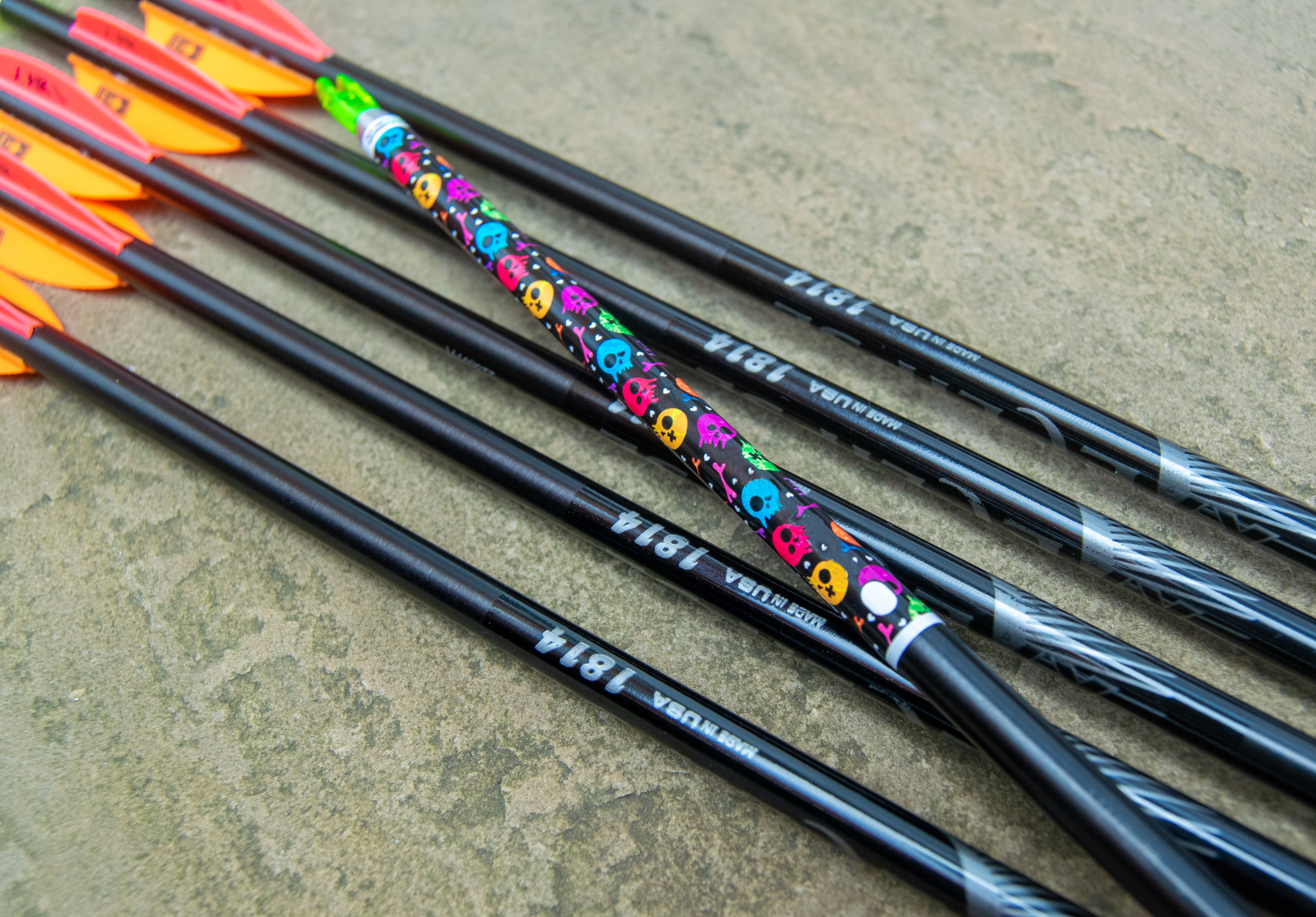Choosing the right arrow shaft is crucial for achieving a good performance. Understanding the different types of shafts and their impact on arrow flight can significantly enhance your accuracy and consistency. This article explores the key characteristics of parallel, tapered, and barrelled shafts, and explains how to determine the correct spine for your setup.

Parallel shafts are the type most commonly used for beginners because they are inexpensive to make and are generally a good quality, affordable item. Parallel shafts have more mass at the front and rear than tapered or barrelled shafts, which means that they have more inertia at the ends – particularly the rear. This can cause the arrow to flex more and potentially reduce finger clearance on release.
Examples of parallel shaft arrows include: Avalon Carbon Hybrids (pictured) and Easton X10 Parallel Pros.
A tapered shaft is thinner at the back, resulting in reduced drag and a greater front of centre, providing a more forgiving release. A by-product of the tapering is a reduction in arrow weight, which increases speed.
Examples of tapered shaft arrows include: Easton ProTour (pictured) and Pandarus Elite CA-320 arrows.
Not only do you get all of the advantages of a tapered shaft but because barrelled shafts have shifted the shaft balance towards the point of the arrow, they allow for improved wind performance.
Examples of barrelled shaft arrows include: Easton A/C/Es (pictured) and many wooden arrows.
Arrow spine is crucial. An incorrect spine can lead to inconsistent performance, equipment damage, and potential injury.
If an arrow is too weak on the return, the back end will flex in towards the riser causing contact, and this then will cause it to miss its cycle. A weak arrow can enter the target at various different angles as it will be flexing all the way along its journey. The main problem here is that with a selection of weak arrows, it will be almost impossible to get the same result every time, making the grouping random at best.
Check: if you shoot a bare shaft (an arrow with no fletchings), for a right-handed archer the arrow will be pointing right with the back end of the arrow out to the left (for a left-handed archer, the back end will point to the right).
If the arrow is too stiff it won’t flex enough, and this will make it very critical to shoot. Any differences in the release will be very punishing.
Check: if you shoot a bare shaft, for a right-handed archer the arrow will point to the left with the back end of the arrow out to the right (for a left-handed archer, the back end will point to the left) – the opposite of too weak!
Some of the most important pieces of equipment to get right are your arrows. Ultimately, they are what hit the target and score you points! When an arrow leaves your string, it begins its cycle and, if the correct spine is chosen, it will flex around the bow then back in towards the riser, straightening up without any contact with you or the bow. The end result is in an arrow that has a clean flight and is forgiving to shoot.
Check: if you shoot a bare shaft and the spine is correct, it will enter the target straight and true. Just what you want!
Thanks to Adam at Wales Archery.